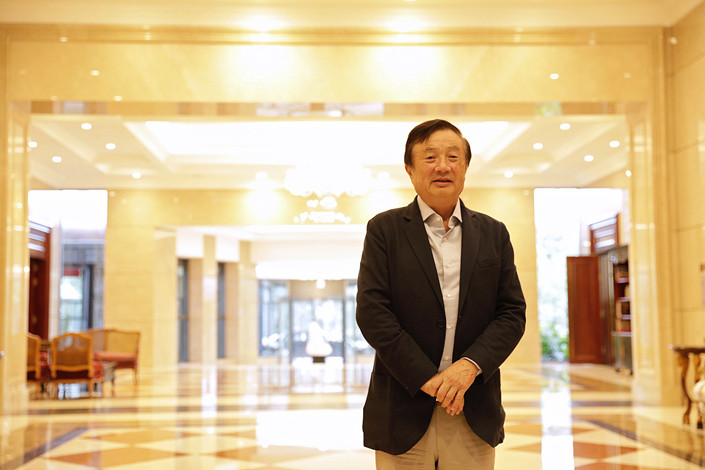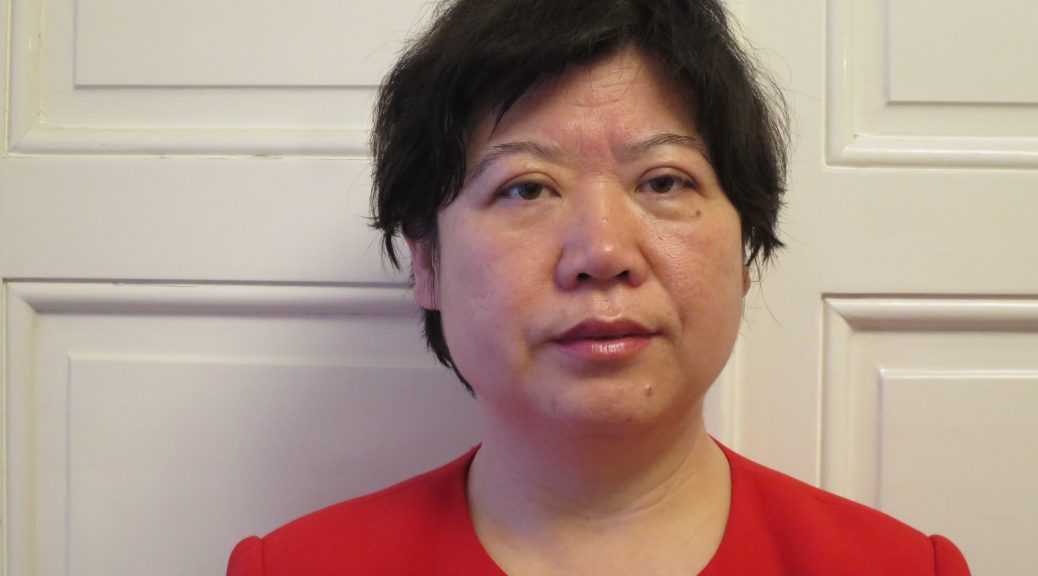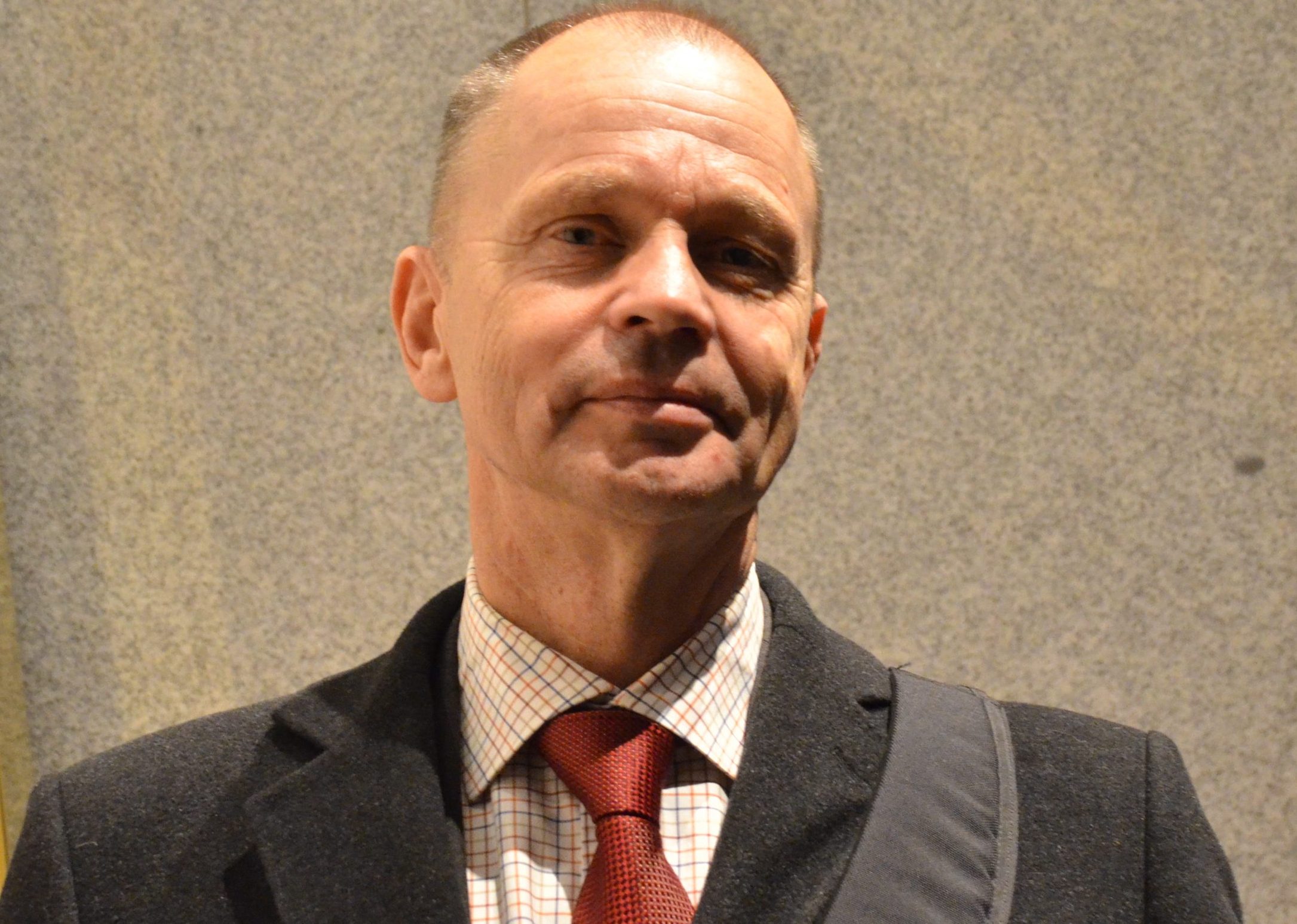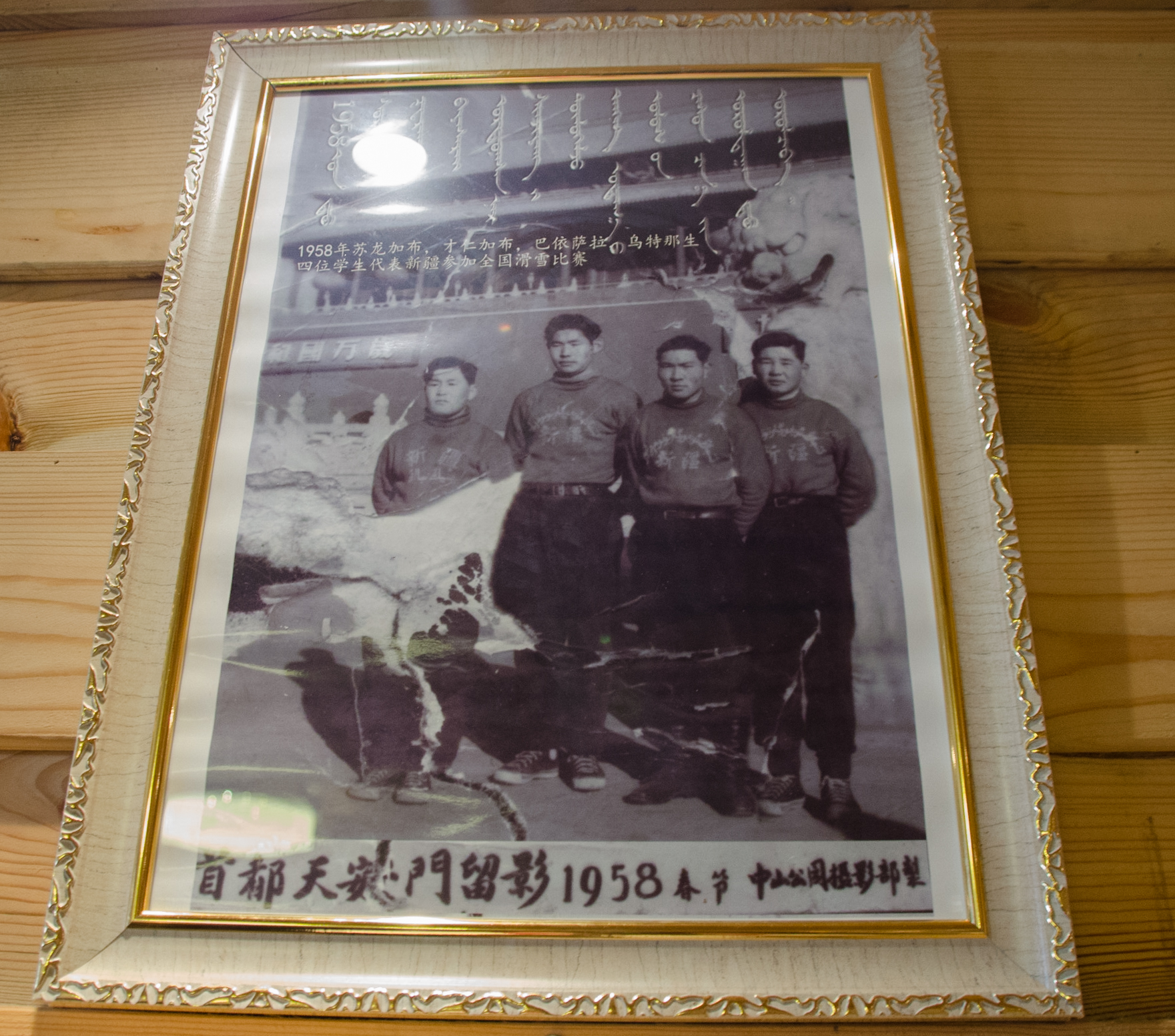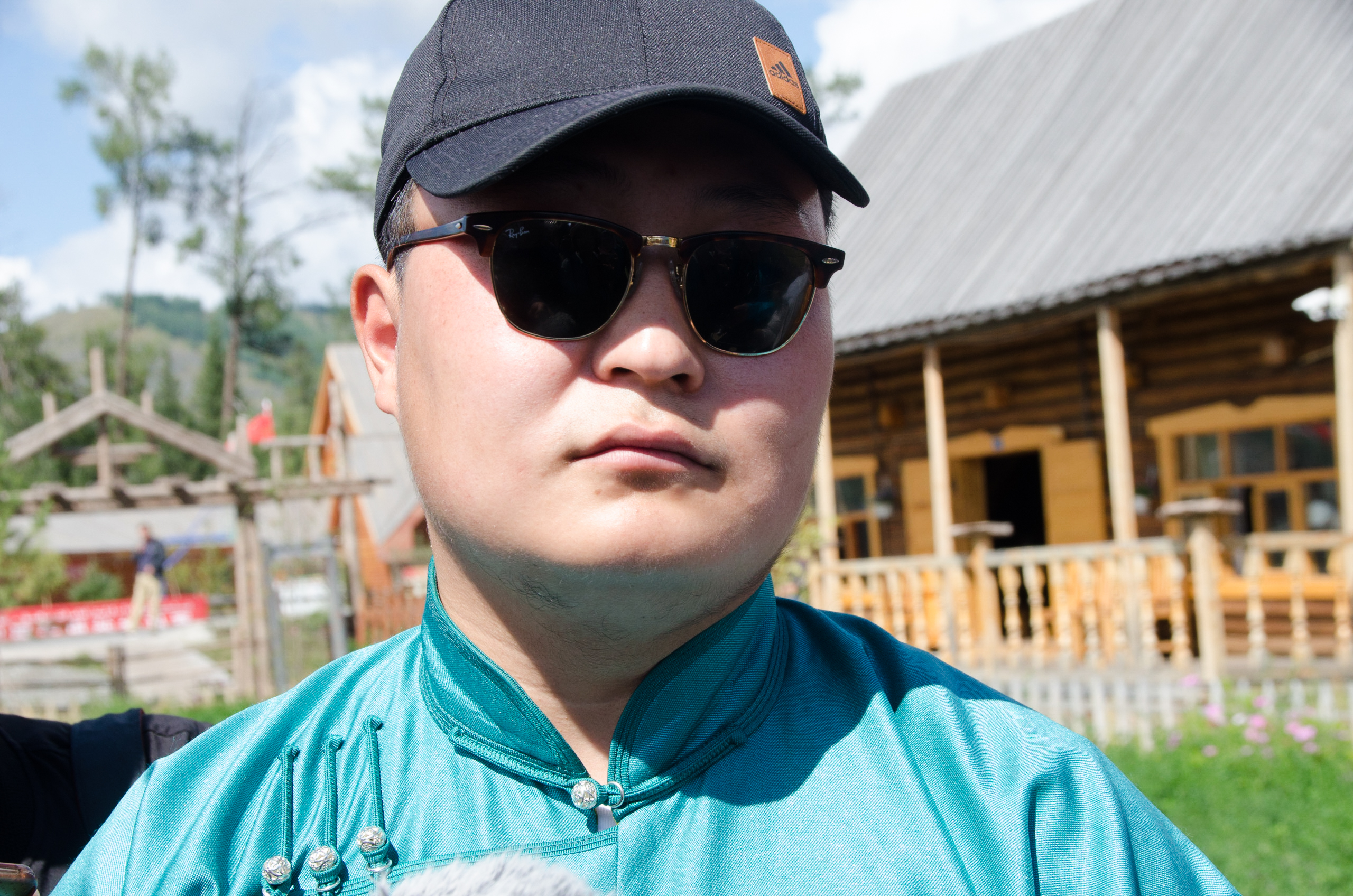Sun Jin, Chief Reporter, Shenzhen Special Zone Daily
STOCKHOLM, Jan. 14(Greenpost):
Abstract: Creating Global Opportunities with an innovative mindset – interview series of top 10 Shenzhen brand stories has come to a perfect close.
Shenzhen Foundation for International Exchange and cooperation (SFIEC), Federation of Shenzhen Industries and Shenzhen Special Zone Daily jointly organized “Shenzhen-Made With Global Vision – An Exploration of Shenzhen Brand Stories” on the “CityPlus” platform. After half a year, the media series has come to a perfect close. Through the immersive coverage of 10 brands, such as UBTEech, Hytera, Artron and Fangda, we explored their story of overseas market expansion. In this article, we have included the most prominent parts of 6 SFIEC Trustee Companies for our readers.

2018 marks the 40th anniversary of reform and opening up
Global brands are the best namecard
from Shenzhen to the world
Facing the competition of innovation
Shenzhen has always focused on
technological innovation and industrial upgrade
Changing “Made in China” to “Designed in China” !
Cutting-edge technology: Sailing Towards the Global Market Through European and U.S. American Developed Countries
While Hytera has made the United States its first stop in its international market expansion, BGI started from the Human Genome Project Laboratory at the University of Washington and UBTECH became the first supplier of intelligent robots to make its way into Apple’s global flagship stores… unlike many of the early traditional Chinese companies who “went global”, Shenzhen’s cutting-edge technology brands regard the developed countries in Europe and America as their starting point of globalization.

Hytera: Charging Towards the Global Private Network Communication Innovation Highland
When he first came to the United States in 1997, Chen Qingzhou, the founder of Hytera, decided to make the United States the first stop of “going global” . In his mind, only a strong foothold in the world’s most developed market would make a strong endorsement of product quality.
“The cultural differences between countries are very deep. If Chinese companies want to make good overseas acquisitions, they must be able to apply the wisdom of China’s ‘harmony in diversity’ “.
– Chen Qingzhou: Hainengda founder, Vice Chairman of SFIEC
To succeed in the international market, one must have international talents who understand the local market and are able to take local design, marketing and technology layout into consideration. From the development of C160, the first walkie-talkie for professional wireless communications in China, in April 1995 to the announcement of its intelligent convergence network solution at the Hytera Global Summit in May 2017, Hytera has changed the rules of the game, bringing the private network communication into a new era of “intelligence convergence” .


C160 walkie-talkie / 2017 Global Summit and Hainengda Intelligence Convergence website launch
Today, from Hollywood blockbusters to the Jiuzhai Valley Earthquake, Columbia Mudslides rescue sites, from the Rio Olympics to the World Cup in Russia, from the Xiamen BRICS Summit to the SCO summit in Qingdao… Hytera is everywhere in the world. It has 10 R&D Centres overseas, 90 subsidiaries and branch offices, and has successfully acquired a number of European and US companies. “Think Globally, Act Locally” , Hytera has explored its own international strategy through practice.

BGI: Leading the Way in the Era of Life
Founder Wang Jian started in the laboratory of the Human Genome Project at the University of Washington in the United States, which later turned into the Chinese Biomedical Association of the United States. Since its establishment, BGI has carried an international gene and started its journey to becoming the “gene master” with “1%”.

 National Gene Bank /Independently developed sequencer developed by BGI
National Gene Bank /Independently developed sequencer developed by BGI
With the unique mode of combining production, learning and research, BGI leads the innovation and development of genomics. With cross-border cooperation in more than 100 countries and regions all over the world and applying cutting-edge research achievements of genes to the fields of medical health, agricultural breeding, resource conservation, judicial service etc. Since 2015, BGI has released several independently developed sequencers to further reduce the cost of gene sequencing and promote gene technology for the benefit of mankind. In leading and guiding the formation process of the “Hyper-Moore’s Law” , BGI has also become one of the world’s only three, and China’s only mass production clinical level sequencer company.
“BGI is not a company in the traditional sense, but a social enterprise linking research, industry and people’s welfare.”
-Zhu Yanmei, Executive Vice President of BGI Group, SFIEC trustee

UBTECH: Travelling The World With Robots
Because they had a dream, UBTECH chose robots; because of innovation, UBTECH chose Shenzhen. Founded just six years ago, UBTECH is the world’s first “Unicorn” company in the humanoid robot field. In 2017, it was named one of Fortune Magazine’s “Top 50 worldwide AI start-ups “. From the day of its birth, BGI has always been committed to the internationalization of its brand.
MUST-HAVE ROBOT PRODUCTS


In order for a brand to go global , talent is the key. UBTECH has attracted talent from world-renowned universities, and also owns an internationalized R&D team and professional brand marketing staff, establishing cooperation with international first-class research institutions and enterprises. Since 2008, UBTECH has focused its efforts on developing the technology essential to building androids – steering gear. Finally after five years of overcoming numerous bottlenecks and difficulties, UBTECH developed products that are equal to, if not better than those of first-class European and American companies in terms of parameters performance. From technological R&D, brand translation to global distribution… “internationalization” gave wings for rapid take-off to unicorn enterprises like UBTECH from the beginning.
In UBTECH’s blueprints, there is not only a dazzling, cool “futuristic feel”, but even more, a warm, amiable “sense of expectation”: At the 2016 CCTV Spring Festival gala, UBTECH’s independently developed and produced humanoid robot won the audience with its cuteness: by being able to talk, host and dance, they became the hottest internet celebrities of the day.
High-End Manufacturing: Overcoming Technical Difficulties and Winning Customer Trust
Fangda Group and China Southern Glass Holding’s road to internationalization is a microcosm of the internationalization of China’s high-end equipment manufacturing industry. In short: things are difficult before they become easier, it was by overcoming technical and R&D difficulties that they could enter the international market thereby gaining the support and trust of customers all around the world.
FangDa Group: On The Global Track To The Rhythm of Belt and Road
As Xiong Haigang, assistant to the president of Fangda Group and general manager of Fangda Automation System Co. , Ltd. admitted, although the R&D and post-manufacture positioning of Fangda’s products far exceed domestic and international standards, establishing a Chinese equipment manufacturing brand overseas was no easy task. What Fangda lacks is the opportunity to gain international recognition for its high-standard products and services.
On November 29,1995, at the base of innovation in Shekou, Shenzhen, Fangda Group was listed on the Shenzhen Stock Exchange as the first listed private enterprise in China.
Since 2008, Fangda began to expand overseas markets, but the first three years didn’t yield any favorable results. The turning point came in 2012, when Fangda Group took part in the solicitation process for the Singapore MRT Takashi Extension Project. After more than four months and 11 rounds of discussions, a deal was finally made and they gained recognition from the Singapore Metro Industry and local government authorities, opening a window of opportunity for overeas market development. Due to Singapore’s leading role in governance and urban operations management in Asia, the overseas brand image that the group has established through the Singapore Metro has also had an impact everywhere, Malaysia, the Philippines, Thailand subway companies from other countries have reached out to them, and even took initiative to manufacture their own subway screen doors in accordance with the high standards of Fangda.
Overseas customers went from questioning Fangda’s ability to manage projects and product quality to voluntarily asking Fangda to establish local branches to in order to develop and preserve a more long-term and stable cooperation, this attitude represents the opinion international customers had towards accepting China’s equipment manufacturing brand, going through a process of recognition from “unfamiliarity to acknowledgment to understanding and support”.
CSG Holding: “Made in China” on the skyline of Global Metropolises
From Manhattan, New York to Canary Wharf, London, from Dubai to Central Milan, countless “made-by-CSG” glasses have added color to the skyline of the world’s most famous cities. Born in 1984 in Shekou, Shenzhen, the CSG Holding has since its inception been representing China in the international market competition.
Most leading countries of glass technology in the world are in Europe and the United States, which means they’re all located in relatively cold regions where the climate environment is similarly cold. In China, the climate diversity from north to south has put forward higher requirements for glass properties, opened up a wide market for the development of diversified products for CSG, and met the special requirement for heat resistance of glass in Australia, the Middle East and other regions due to long sunshine time. CSB has succeeded in attracting international customers by taking the difficult road of independent R&D when it encountered the limits of overseas technological barriers. As early as 1998, CSG produced the 1.1 mm ultra-thin float glass for the first time, it was the first float glass production line with independent intellectual property rights in China. Now, there are nearly 350 float glass production lines in China, all developed on the basis of CSG.
From the very beginning of learning from different international brands and drawing on the strengths of each countries, while co-developing designs with national design institutes, CSG discovered a way independent R&D in manufacturing.
Cultural Creativity: A New Outlet for Cultural Consumption With “Artistic Wisdom”
In the era of globalization and the internet, the elements of innovation are gathering towards “urban characteristics” of the international urban agglomeration from the traditional “geographical zone”. From “Cultural Desert” to “Cultural Oasis” , “Cultural Innovation” is the “urban characteristic” displayed in the process of Shenzhen’s reform and opening-up.
From Artron, a global arts service provider, to the international professional orchestra Shenzhen Symphony Orchestra, to the Shenzhen Watch & Clock Association, a leader in creating time culture in Shenzhen, Shenzhen has paved its way of innovation leading towards globalization for cultural brands with a global vision and Shenzhen characteristics.

Artron: Creating “world culture” with “artistic wisdom”
Starting from Shenzhen, Artron looks up at the sky leading to international brands, and the “artistic wisdom” displayed in the process of transforming a printing methodology into a way of art has become the benchmark for the international development of its brand.

 The Artron art center, the world’s largest art book wall, won the “Oscar” of the printing industry — “Benny Award” Gold Prize
The Artron art center, the world’s largest art book wall, won the “Oscar” of the printing industry — “Benny Award” Gold Prize
By applying the differentiation strategy and reducing commercial printing, Artron has moved away from traditional printing towards an art and design oriented cultural enterprise. They have settled into their new state more quickly: to make people’s lives better. “With print becoming more personalized and small-scale, in the future, a printed book may become a ‘Work of art’ or a ‘luxury good,’. What is to come is digital information that can be linked to in depth reading on paper, with one quick scan with your phone you can connect directly to the ‘Artron Cloud Atlas’,” said Peng Gan, CEO of Artron Culture Group and a veteran of overseas business development.
Artron aims to represent the highest standard of the industry “Oscar” with professional standards in order to be internationally recognized, thus successfully giving Chinese brand access to the global market. Since winning the gold medal at the 2003 American print awards for his production of “the face album of Mei Lanfang opera” on the “Oscar Stage” – Benny Award, Artron has won the world’s top printing prize 12 times, winning a total of 65 Benny Awards and becoming the printing company to recieve the most global prizes in the last five years.

Orchestras and companies are very different, with the former relying on a long history of culture, including top talent, unique repertoire, and good reputation, none of which can be accumulated in a short period of time. Based in southern China, Shenzhen Symphony Orchestra has quickly established a global reputation as a leading serious music group and become a brand of well-deserved international cultural exchange in Shenzhen.Shenzhen Symphony Orchestra: “Shenzhen’s Melody” Lingering in the World Music Scene
 Performed at the Concert Hall of the Liszt Music University in Budapest, Hungary
Performed at the Concert Hall of the Liszt Music University in Budapest, Hungary
Founded in 1982 at the beginning of the reform and opening-up period, Shenzhen Symphony Orchestra began to learn from the professional experience of international orchestras in the 1990s, breaking the traditional way of “ranking according to Seniority” with the principle of “bringing in, going out”. The Orchestra not only attracts outstanding music talents from home and abroad, but also trains them in a planned and cost-effective way, providing them with great studying opportunities. Furthermore, it also dares to work with the world’s best to continuously enhance the professional standard of the orchestra.
So far, deep friendships have been established in five continents. The Orchestra has toured in the Czech Republic, Poland, Germany, Italy, France, Turkey, South Africa, the United States, Singapore, Indonesia, South Korea and Thailand among many others. The orchestra pays special attention to traditional Chinese compositions, with some original compositions such as “Harmony in China” , “Folk songs and Hakka tunes” and “Ode to Mankind” being performed with great success at the United Nations headquarters, the UNESCO Headquarters and the world’s most prominent concert halls.
“We learn from the outside world and absorb their experience for our own good.”
-Nie Bing, Director of Shenzhen Symphony Orchestra and SFIEC Trustee

Shenzhen Watch and Clock Association: Transmitting Shenzhen’s Time Culture To The World
Even though we can’t change the past, we can strive for a spot in the future.
As one of the earliest industrial associations in Shenzhen, Shenzhen Watch & Clock Association has been continuously exploring and innovating the element of “time culture” for 31 years, guiding and leading local watch enterprises in Shenzhen to move towards “fashion technology”, extending the reach of the development of artificial intelligence to the wearable product industry, providing other manufacturers with precise and intelligent manufacturing capabilities, and sharing the “time culture” of Shenzhen Intelligent Manufacturing with global consumers.

 Swiss National Innovation Park and Time Valley Sign Strategic Cooperation Agreement / Time Culture Week Opening Ceremony
Swiss National Innovation Park and Time Valley Sign Strategic Cooperation Agreement / Time Culture Week Opening Ceremony
On the road of brand internationalization growth, while the Shenzhen watch enterprises cooperate with European Swiss and French high-end brands, they also research and develop products for new generation of consumers with digitalization. Since 2011, Shenzhen has held Chinese Watch Culture Week every year. This year, the first Shenzhen Time Culture Week shows “the eternal charm of time” in the form of exhibitions, forums etc.
It is precisely because of the continued investment and perseverance in the creation of a brand that Fiyta, Tian Wang, Ebohr, Power, Starking and other Shenzhen Watch brands are gradually becoming more and more well known. ”
Time is fair to everyone! The key lies with he who can convey the future,”said Zhu Shunhua, president of the Shenzhen Clock & Watch Association.
Other two companies
Winner Medical: Leading The Global Medical Dressing Industry With The Motto “Quality Before Profit”
As the leading manufacturer of medical dressing, starting at OEM business and moving to an independent brand, from imitating and copying to developing independent creations, Winner Medical have travelled the harder, less walked path.
Only by driving more Chinese companies to win overseas recognition by improving their quality can Chinese brands increase their international influence. In 2007, Li Jianquan, the founder and chairman of Winner Medical, initiated and established the medical disposable market of China Medical Insurance Chamber of Commerce to lead the healthy development of the medical disposable market and help more enterprises establish brand awareness and begin taking the road towards independent brand development.
After the international ISO quality management system came into being, Winner Medical took the lead in entering the medical disposable market, and introduced the German company TUV as the certification body, and established a thorough medical dressing quality supervision system. Every process and quality standard of product manufacture is redefined, from raw materials in warehouses to production monitoring, from production environment to equipment processes, all under the thorough and accurate control system.
In 2005, Winner Medical successfully completed the independent research and development of their patent technology of “cotton spun laced non-woven fabric” , creatively using raw cotton to directly produce all-cotton spun laced non-woven fabric, completely derailing traditional equipment and processes. This is also Winner Medical’s starting point of the shift from ” just medical for treatment to daily use”. Now, “all-cotton spun laced non-woven” technology in China, the United States, the European Union, Japan and other countries and regions around the world made a patent certificate, known as “China’s textile industry’s great creation”. In 2009, Winner Medical established subsidiary PurCotton, successfully beginning their development towards medical products that are suitable for daily use with “bringing medicine closer to life, and cotton closer to health, ” as their core principle, which also marks the beginning of Winner Medical’s entry into the consumer goods field.
Qixin Construction: Uniting The World With Creative Decorations
Innovation and self-loyalty are the values behind Qixin shares, and are also the values Qixin shares will hold true to before setting out from south China and reaching the rest of the country and the rest of the world. With the Beijing Yanqi Lake International Convention and Exhibition Center, Kunming Dianchi International Convention and Exhibition Center, the Shenzhen Citizen Center and other well-known landmarks, Qixin‘s recognition, visibility and reputation has risen.
In recent years, under the “Belt and Road” initiative, Qixin has “gone global” , undertaking landmark projects together with chinese-funded institutions, ranging from the Vietnam-China Friendship Palace to Djibouti’s National Library and archives, to the Equatorial Guinea Stadium, Qixin Shares spreads excellent, decorative architecture around the world, at the same time, it shows the world China’s new image after its reform and opening-up, and promotes China’s modern scientific and technological achievements and traditional culture. From the foreign market background investigation, familiarity with international law and policy to employee training, Qixin “goes global” in order to compete in the international market, sharpens internal skills, with the strength of the enterprise growing continuously.
With the deepening of the reform and opening up and upgrading of the industrial structure, Qixin already began years ago to apply the Internet of Things strategy in construction, with the construction as their core business, they restructured the industrial value chain, innovated the world of networking and led the trend of healthy living. Today, Qixin has realized “perception, interconnection and wisdom” of construction both internally and externally, providing customized solutions, user experience-based services, while also offering comprehensive “construction IoT+” products and service solutions.
Expert Insights

Niu Huayong, Executive Dean of the School of Southern Studies at Beijing Foreign Studies University, shared his expert insights.
“Forty years after its reform and opening up, Shenzhen has gone from a contract factory to today’s innovation capital of China and the world. This is because a number of innovative enterprises with great aspirations have chosen to invest in research and develop at a time when others only care about making easy money in order to claim the high ground in ten to twenty years from now. After experiencing initial difficulties, the explosive, unlimited motivation will be unmatched by other enterprises.”
About “CityPlus”:
“CityPlus” is a two-way information platform initiated by Shenzhen and dedicated to the whole world. It aims to let the world learn about Shenzhen in a warm and interesting way and let Shenzhen citizens know the world.
Reference:
http://cityplus.com/main/special/enShenzhen.view
Hytera: https://mp.weixin.qq.com/s/PPpN4BQGysjeWUU5n5HJ4Q
BGI: https://mp.weixin.qq.com/s/1cXVQxniWL8vhY1gwOEEBQ
UBTECH: https://mp.weixin.qq.com/s/dTmtd9QWFadTp6s8eCdKrQ
FANGDA Group: https://mp.weixin.qq.com/s/bJD3WJO91U2HyD45atDKnQ
CSG Holding: https://mp.weixin.qq.com/s/tn7RSXb8c9Wahsepcptm_A
Artron: https://mp.weixin.qq.com/s/eqsUmdAWLZEXZAfWFqbTZg
SZSO: https://mp.weixin.qq.com/s/mC1wLiUeLWtJfcBEzF-VBA
SZWCA: https://mp.weixin.qq.com/s/QUWDufkgUJUYNPA-xz60Rg
Winner Medical: https://mp.weixin.qq.com/s/_G3D4E59rWCnz8GpQPzNGA
Qixin: https://mp.weixin.qq.com/s/m8Cswazcd2Le8uI1_Gn9rQ
